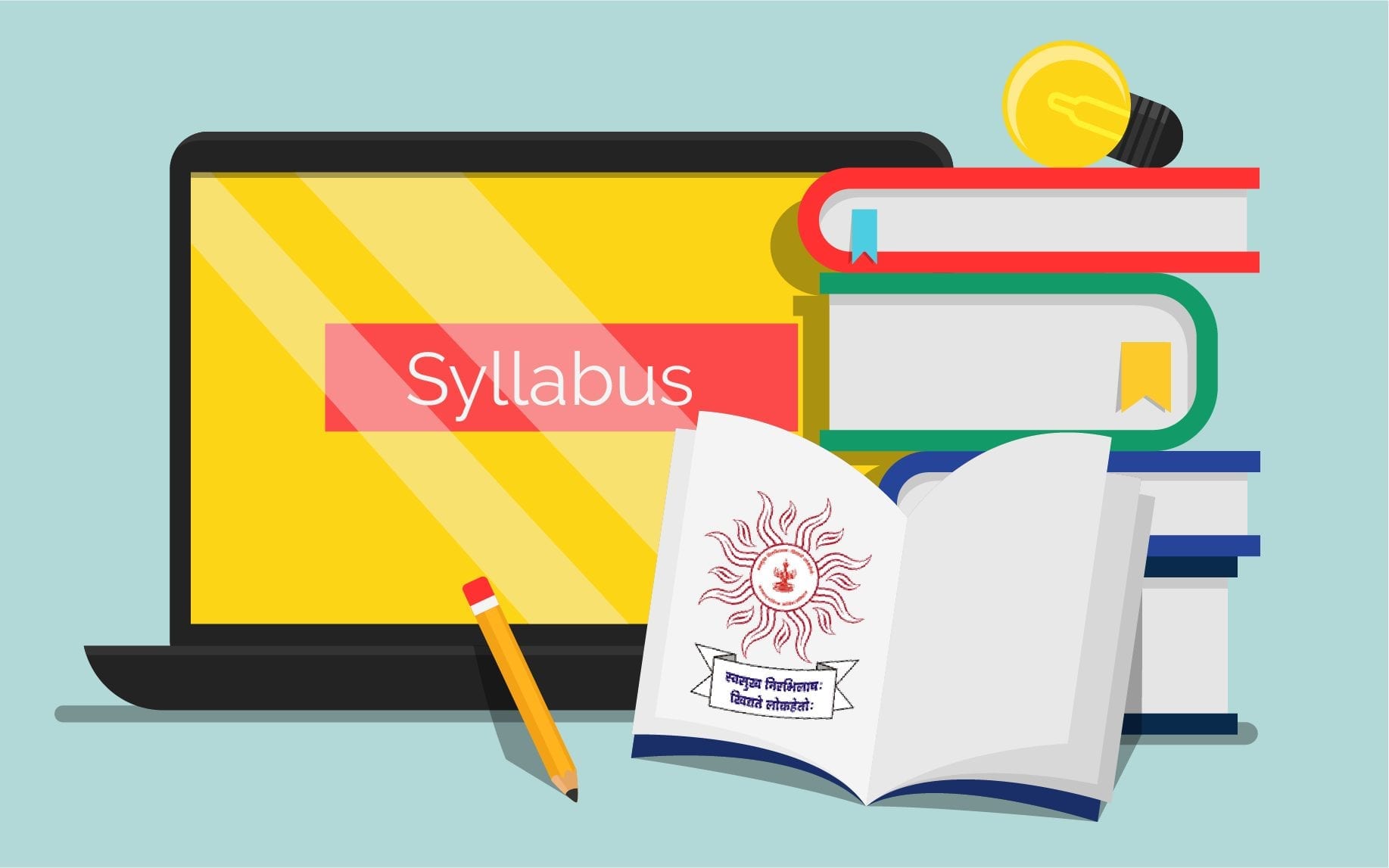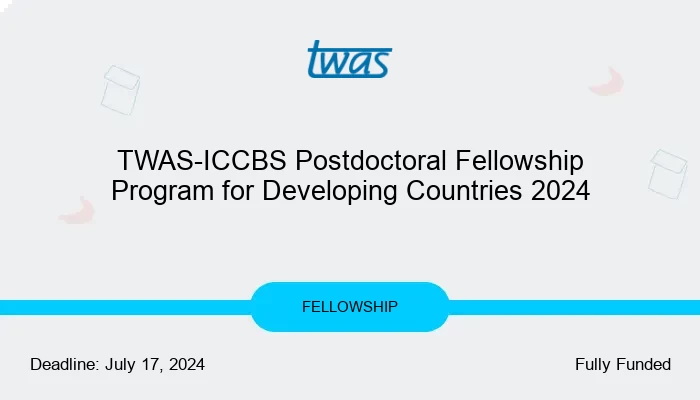MPSC Syllabus
The Maharashtra Public Service Commission (MPSC) conducts one of the most reputable recruitment exams called the State Service… The post MPSC Syllabus appeared first on Leverage Edu.


The Maharashtra Public Service Commission (MPSC) conducts one of the most reputable recruitment exams called the State Service or MPSC Rajyaseva Exam. The MPSC exam is a great opportunity if you want to acquire an esteemed job under the Maharashtra Government. The young minds who qualify for the exam will be entitled to promising job profiles within various administrative departments of the Maharashtra government. If you aspire to take the examination for the year 2021, here is a blog that elucidates MPSC Syllabus 2021.
| Event | Revised Dates |
| Prelims Exam Date | 21st March 2021 |
| MPSC Subordinate Services (Group B) Prelims 2020 | 22 April 2021 |
| MPSC Engineering Services Prelims 2020 | 27th March 2021 |
Also Read: Upcoming Government Exams 2020
MPSC Syllabus
The syllabus for the MPSC exam is divided into three sections. Like all other SSC exams, the three stages include:
- Prelims
- Mains
- Interview
MPSC Prelims Syllabus
Before starting with preparation, you must check out the entire MPSC syllabus. Getting a hold of the intricacies of the syllabus will help you develop a better grip over the exam. Let’s have a look at paper wise inclusions of the syllabus.
Paper 1 Syllabus
Important topics for this paper mentioned in the syllabus are:
- Latest events of national, international and state importance
- History of India (Specially related to Maharashtra) and Indian National Movement
- Maharashtra and India- Constitution, Political System, Urban Governance, Polity and Governance, Panchayati Raj, Rights Issue etc.
- India, Maharashtra and world geography- Social, Economic, Physical as well Geography of Maharashtra
- General Science, Social and Economic Development, Climate Change, Biodiversity etc
Important: UPSC Exams
Paper 2 Syllabus
Following are the essential concepts of the MPSC syllabus which you should prepare for securing high marks in paper 2:
- Interpersonal Skills and communication skills
- Analytical Ability and Logical Reasoning
- Problem-solving and decision ability
- Comprehension
- General mental ability
- Basic mathematics and data interpretation
- English and Marathi language skills
Take our GK Quiz!
MPSC Main Syllabus
The potential candidates who qualify for the first stage of the MPSC examination are then promoted to the mains. This is one is a detailed examination with separate papers for every subject. Here is a critical analysis of the MPSC Syllabus for all the papers of the main examination.
Paper 1: Marathi and English (Essay/ Translation/ Precis)
Under the first paper, there are 2 sections of which will offer questions from the topics like-
Section 1: Marathi (50 marks)
- Essay Writing- A 400 words essay on one of the two given topics
- Precis writing
- Translation- A paragraph given in English will be translated to Marathi
Section 2: English (50 Marks)
- Translation- A paragraph given in Marathi will be translated to English
- Essay Writing- A 400 words essay on one of the two given topics
- Precis writing
Have a look at English for Competitive Exams
Paper 2: English and Marathi (Grammar and Comprehension)
Major topics under paper 2 of the MPSC syllabus are:
Section 1: Marathi (50 marks)
- Grammar: Sentence Correction, Synonym and Antonym, Phrases and Idioms
- Comprehension
Section 2: English (50 marks)
- Grammar: Synonym and Antonym, Sentence Correction, Phrases and Idioms
- Comprehension
Related Read: General Aptitude
Paper 3: General Studies I: (History & Geography) (150 marks)
Paper 3 is a common paper for subjects like History, Geography as well as Geography, and Agriculture. Important topics for each of the subjects are:
History
- Establishment of the British Rule in India: Arrival of the British East India Company, Wars against major Indian powers, Policy of subsidiary alliance, Doctrine of Lapse, Structure of British Raj up to 1857.
- History of Modern India: Introduction of modern education – Press, Railway, Post and Telegraph, Industries, Land reforms and socio-religious reforms and their impact on society.
- Renaissance Era:
- Social and Cultural Changes: Contacts with Christian Missionaries, Role of English education and the press, Official- social reform measures (1828 to 1857).
- Socio-religious reform movements: Brahmo Samaj, Prarthana Samaj, Satyashodhak Samaj, Arya Samaj, Ramkrishna Mission, and Theosophical Society.
- Reform movements among the Sikhs and the Muslims, Depressed Classes Mission, Non-Brahmin movement, and Justice Party.
- Indian Economy under Colonial Rule:
- The Mercantile phase, The Drain of the Wealth: The Drain Theory of Dadabhai Naoroji, de-industrialization Decline of Indian Handicrafts, Commercialization of Indian Agriculture.
- Rise of Modern Industry: Role of Indian mercantile communities, Entry of British Finance Capital in India, Tilak’s Swaraj Fund and contribution of G. K. Gokhale.
- Emergence and growth of Indian Nationalism: Social background, formation of National Associations, Role of Press and Education in social awakening in pre-independent India, Revolt of 1857, the foundation of Indian National Congress, the moderate phase, growth of extremism, Partition of Bengal, Home Rule Movement,
- Role of important personalities- Surendranath Banerjee, Firozshah Mehta, Dadabhai Naoroji, A. O. Hume, Bipin Chandra Pal, Lala Lajpat Rai, Annie Besant, Aurobindo Ghosh, Bal Gangadhar Tilak, Mahatma Gandhi, Pandit Jawaharlal Nehru & Others.
- Famous movements against the British Government:
- Peasant uprisings, Tribal uprising – Mutinies of – Raghoji Bhangra, Umaji Naik, etc., and Adivasi Movements.
- Revolutionary Movements: Revolts in Maharashtra-Vasudeo Phadke, Abhinav Bharat, Revolutionary Movements in Bengal & Punjab, Revolutionary movements of Indians in America, England, Azad Hind Sena.
- Communist (Leftist) Movement: The Communists and the Indian freedom struggle, Congress Socialist Party, Trade Union Movement.
- The national movement in Gandhian Era and Dr. B.R. Ambedkar’s approach to the problem of untouchability: Gandhiji’s leadership and ideology of resistance, Gandhian mass movements, Non- cooperation movement, Civil Disobedience movement, Faizpur Congress session of 1936, Individual Satyagraha, Quit India Movement, Gandhiji, and removal of untouchability.
- Dr. B. R. Ambedkar’s approach to the problem of untouchability, Movements for Annihilation of Caste – Dr. Ambedkar’s approach, Gandhiji’s approach, Other Efforts; Unionist Party and Krishak Praja Party, Women’s participation in the National movement.
- States’ Peoples’ movements.
- Constitutional Development under British Government: The Indian Council Act-1861, The Indian Council Act-1892, The Indian Council Act-1909 (Morley-Minto reforms), The Government of India Act 1919 (Mont-Ford reforms), The Government of India Act 1935.
- Growth of Communalism and the Partition of India: Muslim politics and Freedom movement (Sir Syed Ahmed Khan and Aligarh movement, Muslim League and Ali Brothers, Iqbal, Jinnah), Politics of Hindu Mahasabha.
- Toward the Transfer of Power: The August Offer 1940, The Cripps Mission 1942, The Wavell Plan 1945, The Cabinet Mission Plan 1946, The Mountbatten Plan 1947, The Indian Independence Act 1947
- India after Independence: Consequences of Partition, Integration of Princely states, Linguistic reorganization of states, Sanyukta Maharashtra movement – Involvement of major political parties and personalities involved therein, Relations with neighbouring countries,
- India’s role in International Politics: Non- alignment policy Nehru, Lal Bahadur Shastri, Indira Gandhi; Progress in Agriculture, Industry, Education, Science and Technology, Emergence of Indira Gandhi’s Leadership, Liberation of Bangladesh, Coalition Governments in States, Students’ unrest, Jayaprakash Narayan and Emergency. Terrorism in Kashmir, Panjab and Assam, Naxalism and Maoism, Environmental Movement, Women’s Movement, and Ethnic Movement.
- Selected Social Reformers of Maharashtra: Their ideology and work: Gopal Ganesh Agarkar, Mahatma Phule, Justice M. G. Ranade, Prabodhankar Thakare, Maharshi Karve, Rajarshi Shahu Maharaj, Maharshi Vitthal Shinde, Dr Babasaheb Ambedkar, Lokmanya Tilak, Sarvajanik Kaka Ganesh Vasudeo Joshi, Pandita Ramabai, Dadoba Pandurang Tarkhadkar, Dr Panjabrao Deshmukh, Lokhitwadi Gopal Hari Deshmukh, Justice K. T. Telang, Dr Bhau Daji Lad, Acharya Balshastri Jambhekar, Jagannath Shankarsheth, Gopal Krishna Gokhale, Kalkarte Shivram Mahadeo Paranjape, Vishnushastri Chiplunkar, D. K. Karve, R. D. Karve, Vinoba Bhave, Vinayak D. Sawarkar, Annabhau Sathe, Krantiveer Nana Patil, Lahuji Salve, Karmaveer Bhaurao Patil, Vishnubuva Brahmachari, Senapati Bapat, Rashtrasant Tukadoji Maharaj, Baba Amte, Sant Gadge Baba.
- Cultural Heritage of Maharashtra (Ancient to Modern): Kanheri, Elephanta, Ajanta, Ellora caves, Lonar lake, Forts, etc. Performing Arts – Dance, Drama, Films, Music, Folk Arts – Lavani, Tamasha, Povada, Bharud, and other folk dances, Visual Arts -Architecture, Painting and Sculpture. Festivals. Impact of Literature and Saint literature on socio-psychological development of Maharashtra: Bhakti, Dalit, Urban and Rural Literature.
JEE Mains Exam Day Instructions 2021
Geography
- Geomorphology: Interior of the Earth. Composition and physical conditions. Endogenic and Exogenic Forces, Rocks, and Minerals. Controlling factors on Evolution of the Landforms. Concept of the Geomorphic cycles. Landforms associated with Fluvial, Desert, Glacial, and Coastal Regions. Evolution and Geomorphology of the Indian Sub-Continent. Major Physiographic Divisions of India. Physiography and the geomorphic features of the Maharashtra State. Natural Landscapes in Maharashtra- Hills, Ridges, Tablelands, Spot holes. Waterfalls. Hotsprings and Beaches.
- Climatology:
- Atmosphere- Composition and structure, Extent, Elements of weather and climate. Solar Radiation and Heat Balance on the Earth’s surface.
- Temperature- Vertical and Horizontal distribution of temperature on the Earth’s surface.
- Air pressure- Winds, Planetary, and Local winds. Monsoons in Maharashtra. Distribution of Rainfall, Droughts, Floods and its problems.
- Human Geography: School of thoughts in Human Geography. Determinism and Possibilism, Stop and Go Determinism, Different approaches to achieve Development.
- Human settlements: Rural-Urban settlements- site, situation, Types, size, spacing, and Morphology. Major Problems of Rural and Urban Settlements. Rural-Urban Fringe, Urbanisation: Process of Urbanisation, the sphere of urban influence, Regional imbalances.
- Economic Geography (Special Reference to Maharashtra):
- Economic Activities- Farming –Crops and cropping patterns in Maharashtra.
- High Yield Varieties (HYV). Modern Techniques in Agriculture. Organic farming sustainable agriculture. Govt. policies about agriculture.
- Fishing– Fishing in Inland water and Arabian sea. Problems of the fisherman, modernization in fishing. Minerals and Fuels – Major minerals and fuels in Maharashtra. Reservoirs and Exploitations of minerals. The problem of mining in Maharashtra.
- Transportation- Types of transportation and its development in Maharashtra. Economic Development. Measures of economic development. Sustainable Development. Globalization.
- Tourism– Types of Tourism, Cultural Heritage (Caves, Forts and Historical Monuments) Knowledge-Based Economic Activities – Electronic Industry. I.T. Parks in Maharashtra State especially in Pune city- Silicon Valley of India. CTBT. Role of R and D. Institutes in Maharashtra State.
- Population Geography (Special Reference to Maharashtra): Sources of population data. Growth, Density, and Distribution of the population in Maharashtra. Population Structure and characteristics. Components of population change- Fertility, Mortality, and Migration. Levels and Trends of fertility, mortality, and migration in Maharashtra. Population Growth and Economic Development, Population policies.
- Environmental Geography (Special Reference to Maharashtra)
- Ecosystem – Components: Biotic and Abiotic. The flow of Energy, Energy Pyramid. Nutrient cycling. Food chain and Food web. Environmental degradation and conservation. Global Ecological Imbalances. Reduction in Biodiversity. Threats of biodiversity, Man-Wild Life conflicts. Depletion of forests.
- Global warming- Green House Effects- The Role of CO, CO2, CH4, CFC’s, Nitrogen- oxides (NO). Acid Rains. Heat Islands in Maharashtra. Environmental Laws and Environmental Impact Assessment (EIA). Kyoto Protocol and Carbon Credits.
- Geography and Aero- Space Technology: The Term of Aero (sky) and space. GIS, GPS, and Remote Sensing. The Era of Space Technology in relation to – Defence, Banking, Internet, Telecommunication. Planning in Transportation. (Railways, Roads, Navy and Air transportation.)
- Health and Education.
- Mission Shakti in India. Anti Sattelite Mission. Sattelites Space Assets. The Role of ISRO and DRDO in the Research and Development of Space Technology. The Management of Space Garbage, Prevention of Arms Race in Space. Geo-Strategic position of India.
- Fundamental of Remote sensing :
- The basic concept of remote sensing
- Data and information
- Remote sensing data collection
- Remote sensing advantages and limitation
- Remote sensing process
- Electromagnetic Spectrum.
- Energy interactions with the atmosphere and with earth surface features (soil, water, vegetation)
- Indian Satellites and Sensors characteristics
- Map Resolution
- Image and False-color composite
- Elements of visual interpretation and digital data.
- Passive and active microwave remote sensing
- Multispectral remote sensing and its applications
- Aerial Photographs:
- Types and uses of aerial photographs
- Types of cameras and their applications
- Error determination and spatial resolution
- Aerial photography interpretation and map scales
- Overlapping stereo photography
- GIS and its applications:
- Introduction to Geographical Information Systems (GIS)
- Components of GIS
- Geospatial data – spatial and attribute data
- Coordinate systems
- Map Projections and types
- Raster data and models
- Vector data and models
- GIS task – input manipulations, management, query analysis, and visualization
- Land use land cover change analysis
- Digital elevation model (DEM)
- Triangulated irregular network data models (TIN)
- Applications of GIS to solve the societal needs in natural resource management and disaster management
Agriculture
- Agroecology:
- Concept of an ecosystem, structure, and function
- Energy flow in an ecosystem
- Types and characteristics of the ecosystem
- Biodiversity, its sustainable management and conservation, conservation agriculture
- Role of an individual in conservation of natural resources
- Social issues and environment related to crop production
- Carbon credit: concept, exchange of carbon credits, carbon sequestration, importance, meaning, and ways
- Environmental ethics: Climate change, global warming, acid rain, ozone layer depletion, nuclear accidents, holocaust and their impact on agriculture, animal husbandry and fisheries, contingent crop planning.
- Soils:
- Soil as a natural body, pedagogical and edaphological concept of soil
- Soil genesis: soil-forming rocks and minerals
- Process and factors of soil formation
- Physical, chemical, and biological properties of soil
- Soil profile and components of soil
- Soil as a source of plant nutrients, essential and beneficial plant nutrients and their role, forms of plant nutrients in the soil
- Soil organic matter – sources, composition, properties, factors affecting SOM, its importance and influence of SOM on soil properties
- Soil organisms – macro and micro-organisms, their beneficial and harmful effects on soil and plant
- Soil pollution: sources of soil pollution, behavior of pesticides and inorganic contaminants, prevention and mitigation of soil pollution
- Problem soils and their reclamation
- Remote sensing and GIS in diagnosis and management of problem soils
- Soil erosion, types, and soil erosion control measures
- Organic farming
- Nanotechnology, precision farming
- Water Management: Hydrological cycle –
- Rainfed and dryland Agriculture
- Water conservation techniques
- Drought and crop mitigation
- Runoff and water harvesting
- Concept, objectives, principles, components of watershed management, and factors affecting watershed management
- Irrigation water quality, water pollution and effect of industrial effluents, Drainage of waterlogged soils,
- Criteria for scheduling irrigation, water use efficiency and irrigation efficiencies,
- Inter-linking of rivers,
- Irrigation and water requirement of crops,
- Irrigation systems and fertigation
Check out: 60 One Word Substitution with Examples
Paper 4: General Studies II (Indian Constitution and Politics and Law) (150 marks)
Being an important part of the MPSC syllabus, this paper will offer you questions from topics like
- Amendment Procedure and Major Amendments to the Constitution
- The Constitution of India
- State Government and Administration (with focus on Maharashtra)
- Political System (Structure, Power and Functions)
Paper 5: General Studies III (Human Resource Development & Human Rights) (150 Marks)
Unde this paper of MPSC examination, majorly the concepts mentioned below are often a part of the question paper
You cannot miss Geography for UPSC Preparation
Human Resource Development
- Education
- Human Resource Development in India
- Health
- Rural Development
Human Rights
- Child Development
- Women Development
- Universal Declaration of Human Rights
- Tribal Development
Paper 6 General Studies IV
Economy & Planning, Economics and Development of Agriculture, Science and Technology Development
The vital topic within paper 6 of the MPSC syllabus are:
Economy and Planning
- Indian Economy
- Industry
- Urban and Rural Infrastructure Development
- Economic Reforms
Economic Development and Agriculture
- Public Finance and Financial Institutions
- Macro Economics
- Indian Agriculture, Rural Development and Cooperation
- Growth, Development and International Economics
Science and Technology Development
- Computer and Information Technology
- Energy
- Space Technology
- Biotechnology
MPSC Exam Pattern
As already mentioned, MPSC is conducted in three successive stages, Prelims, Mains and personal interview.
MPSC Prelims Exam Pattern
The mark scheme, sections, and duration of the MPSC prelims exam have been tabulated below:
| Subject Name | Number of Questions | Max. Marks | Total Duration |
| General Studies(GS) | 100 | 200 | 120 minutes |
| Civil Service Aptitude Test | 80 | 200 | 120 minutes |
MPSC Mains Exam Pattern
The Mains Exam of MPSC comprises 6 papers with varied duration and marks structure. Furthermore, the papers which are objective in nature will also have a negative marking scheme wherein, for every wrong answer, 1/3rd marks will be deducted.
| Subject Name | Max Marks | Time Duration | Type |
| Marathi & English (Essay/Translation/Precis) | 100 | 3 Hours | Descriptive Basis |
| English/Marathi | 100 | 1 Hour | Objective Basis |
| GS Paper I: History, Geography, and Agriculture | 150 | 2 Hour | Objective Basis |
| GS Paper II: Indian Polity and laws | 150 | 2 Hours | Objective Basis |
| GS Paper III: Human Resource Development and Human Rights | 150 | 2 Hours | Objective Basis |
| GS Paper IV: Science and Technology, Economy | 150 | 2 Hours | Objective Basis |
MPSC Syllabus in Marathi
MPSC exam takes place in Maharashtra and is shared in two different languages, English and Marathi. If you wish to read the syllabus in Marathi, read here.
MPSC Syllabus 2021 in Marathi PDF
MPSC Syllabus Books
Here are some of the important books that can help you prepare for the MPSC exam:
| Book | Publication |
| Indian Geography | NCERT 11Th Std |
| Physical Geography | Goh Ching Leon |
| Economic | Ranjan Kolambe, Deepstambha |
| Modern India History | Grover |
| Sustainable Development | Deepstambha Part 2 |
| Environment | Unique Science- 8th To 10th Std NCERT/ State Board Books, Wizard |
Know in detail about the 10 Oldest Universities in India
MPSC Interview Test
Candidates who pass the MPSC Mains Examination are invited to the ‘Interview’ Round. The MPSC appoints a Board of Examiners to interview candidates. The primary fields examined by the interviewer are listed below. The candidate will be interviewed by a board that will have a record of the candidate’s career and interests filled out in the Application Form in front of them. The purpose of the interview is for a panel of competent and neutral observers to assess the candidate’s personal fitness for a career in the state services. In the personality exam, candidates must be informed of events both within and beyond their state, in addition to their academic studies. The interview is more of a purposeful discourse designed to elicit the candidate’s mental traits and analytical skills.
FAQs
CSAT Test II is only a qualifying paper, but MPSC State Services Paper II is not qualifying and is used to determine the merit list for Stage II.
Yes, there is a 50-mark paper on the Marathi language at the Class XII level [Subjective]. There is a 50-mark Marathi [Degree level] objective type paper.
No, there is no optional subject in the MPSC exam
The question papers are set in bilingual i.e. English and Marathi only.
There are six obligatory papers in the mains exam. Papers I and II are language exams, whereas Papers 3, 4, 5, and 6 are general studies exams. The MPSC now has no optional topics, a change adopted in 2012. The objective question papers in MPSC Mains have negative markings.
The salary is roughly around INR 9,300-34,800 + 5000 Dearness allowance and other allowances.
Thus, we hope that through this MPSC syllabus you are all set to begin with your preparation. If you are clueless about how to move towards your desired career, reach out to our experts at Leverage Edu.
The post MPSC Syllabus appeared first on Leverage Edu.

![West African Examinations Council (WAEC) GCE May/June Timetable For 2022/2023 WASSCE School Candidates Examination Exercise [Final International Timetable Released] | Download The PDF File Version Here For Free](https://micplustech.com/wp-content/uploads/2019/12/17264943_1445210792185245_7643945034402954664_n.jpg)






